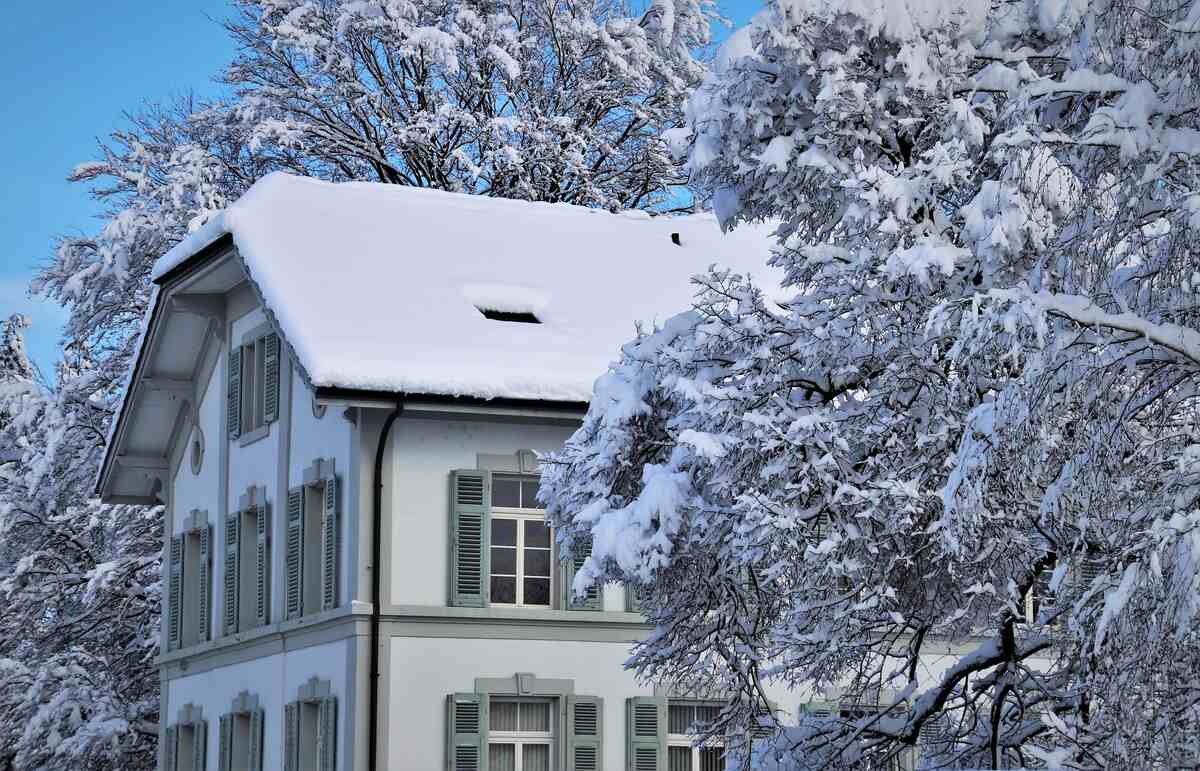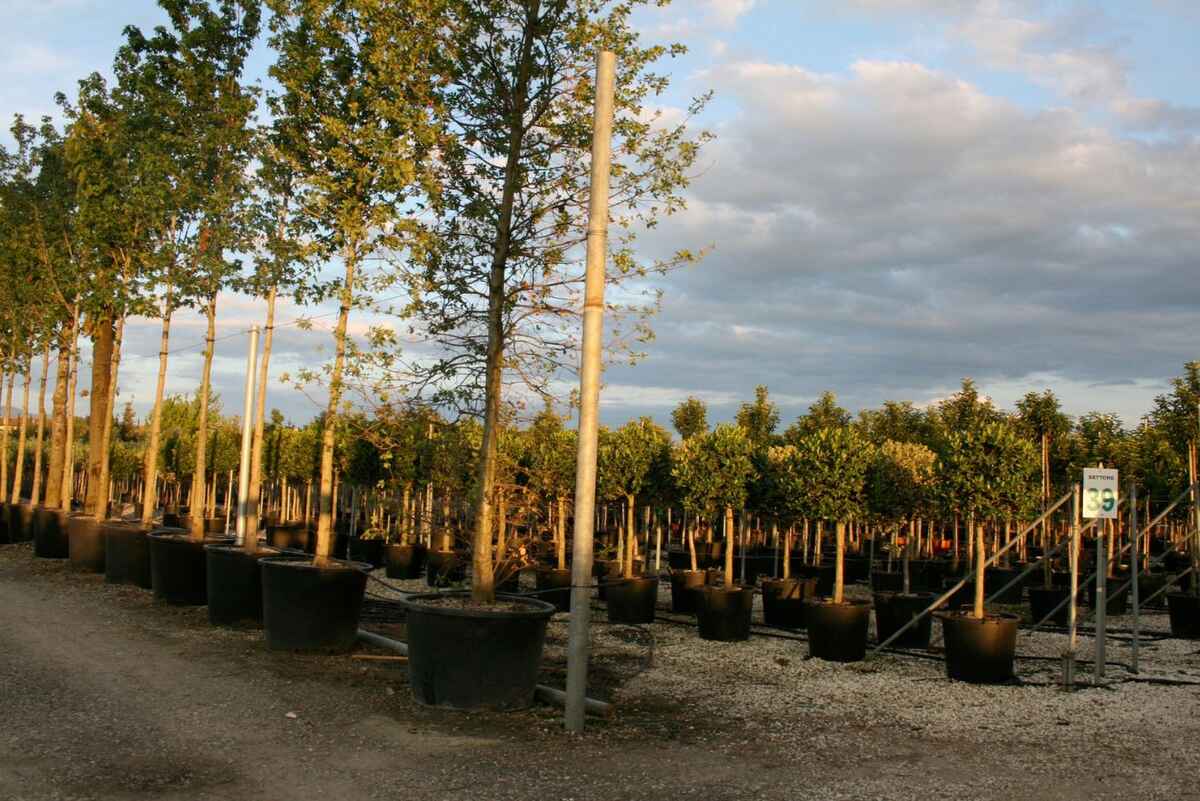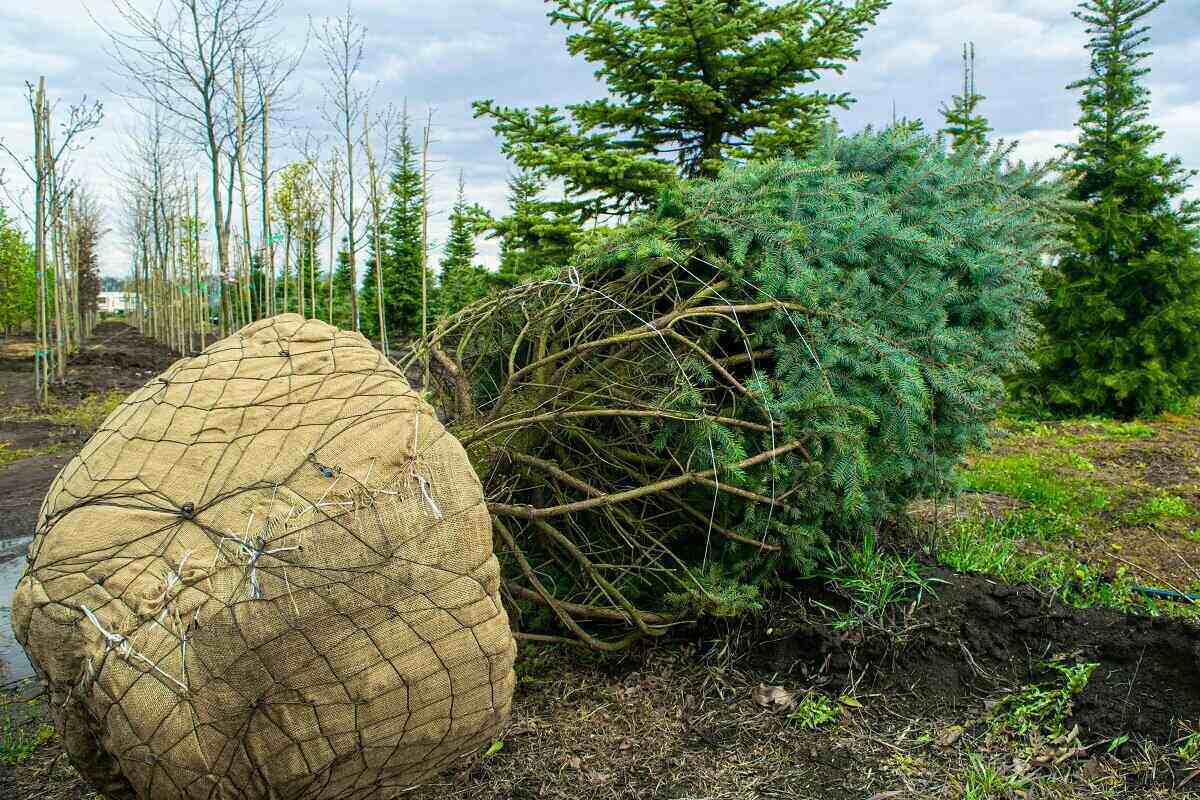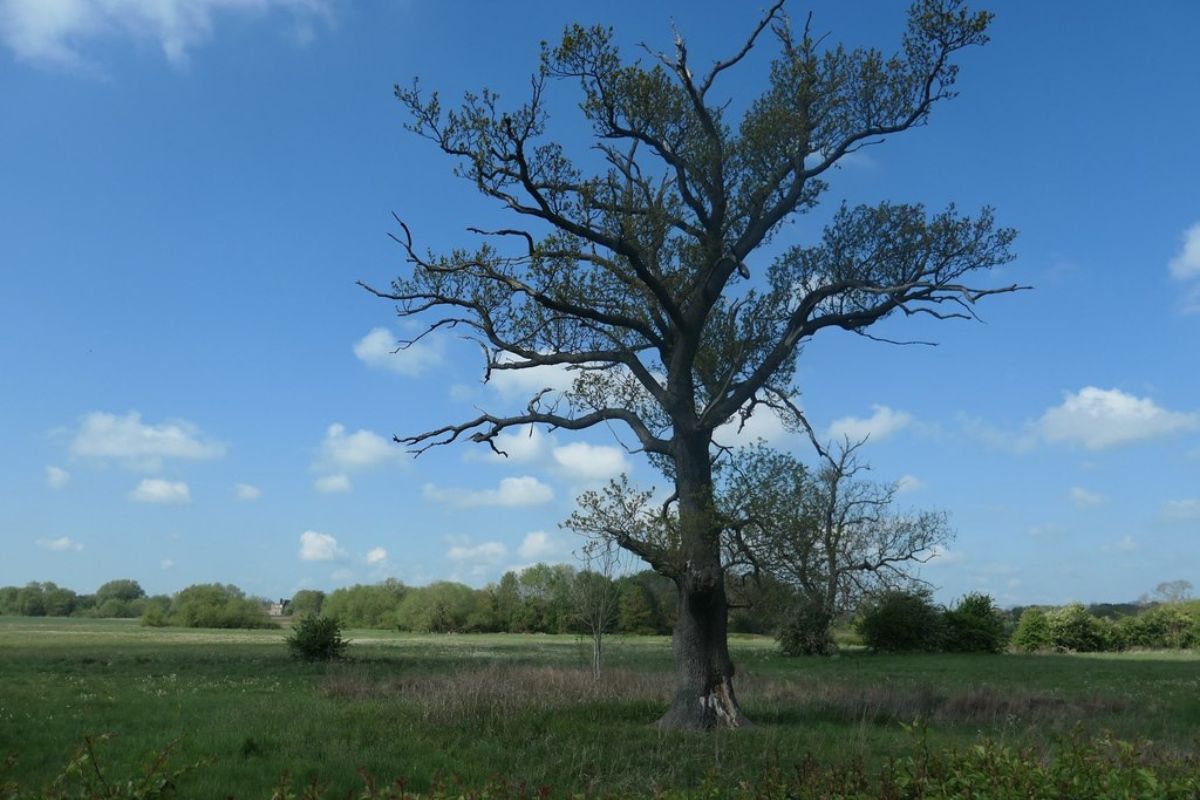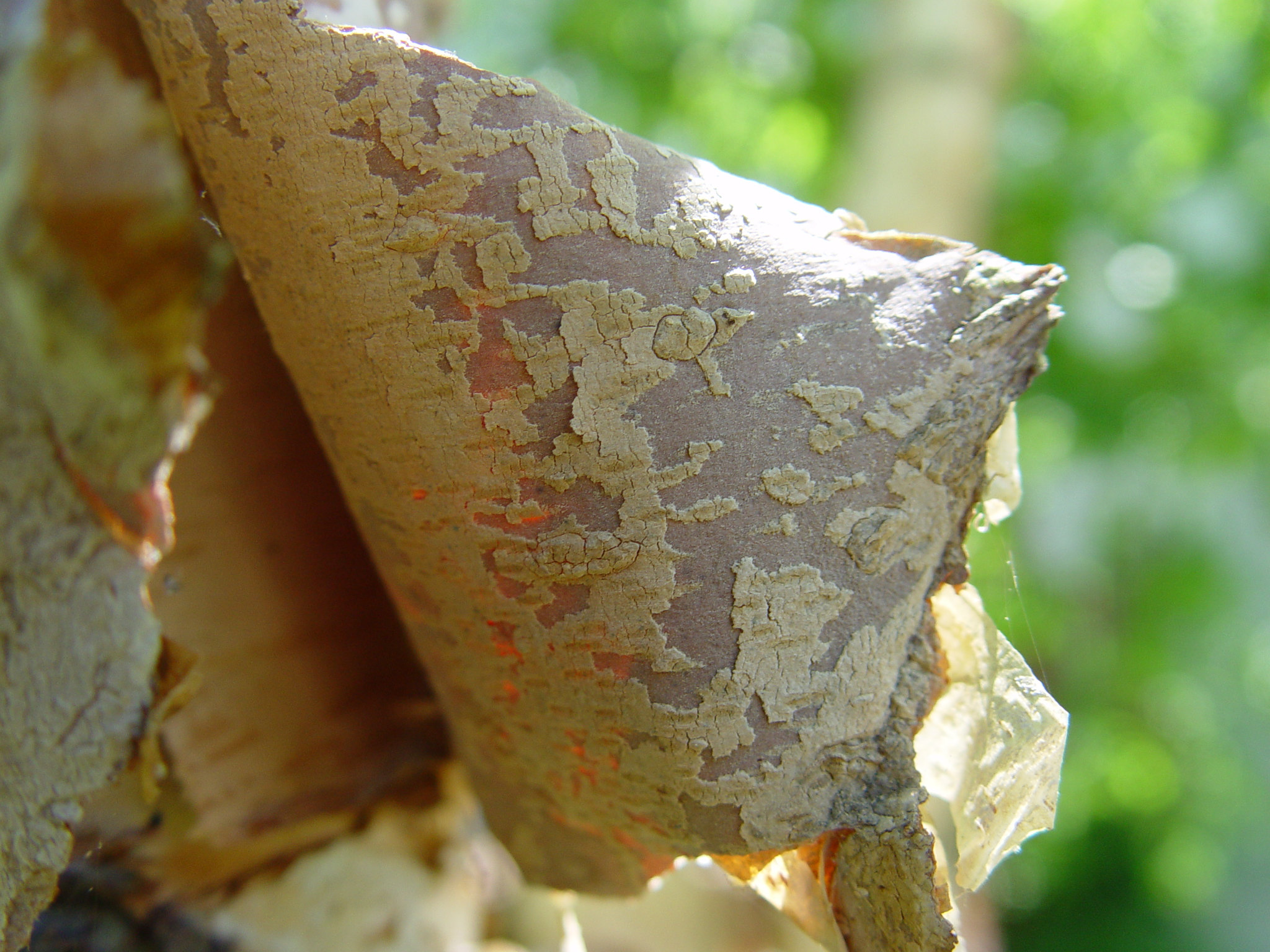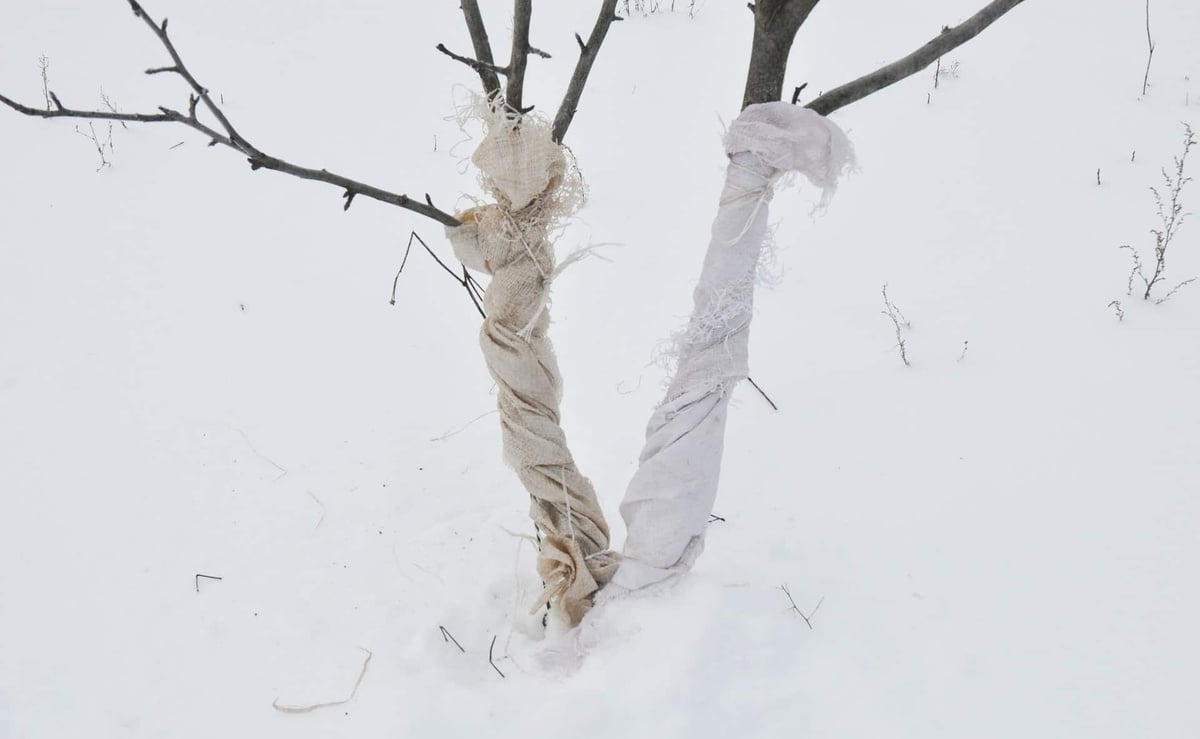
Chances are if you live in the North and buy a tree, the nursery staff will recommend you wrap its young trunk in winter to guard against damage. So let’s talk about tree wrap, what it is, why to use it, and how.
What is Tree Wrap?
Tree wrap is a commercial product used to wrap the trunk of a tree from late fall until the last frost of spring, offering a layer of protection to the bark underneath. The simple process of wrapping a young tree protects it from the massive day to night temperature swings and resulting injury during the cold months.
Why Should You Wrap a Tree Trunk?
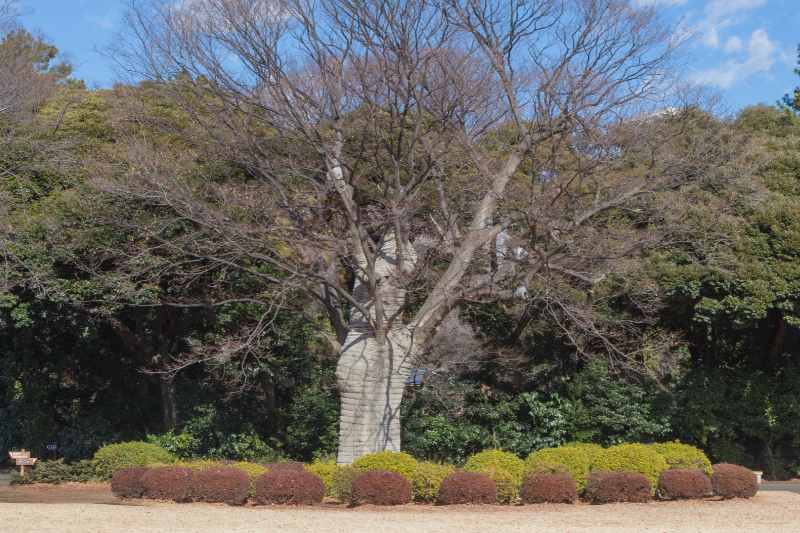
Photo Credit: dizainera / Canva Pro / License
Wrapping a tree trunk is primarily done for protection purposes. Trees are vulnerable to various environmental and mechanical injuries, which is why it’s important to consider the following reasons:
1. The first and main reason to wrap a tree trunk is to prevent sunscalding, which occurs in winter and early spring.
Here’s how sunscalding happens: According to PlantTalk Colorado, high-intensity sunlight during winter days warms the bark of the tree. This warming of the bark triggers cells to “break” dormancy, stimulating cellular activity. When the sun sets or a sudden drop in temperature occurs, these active cells and conductive tissues known as the xylem and phloem are killed.
The resulting injury presents itself as sunken and discolored bark. Over time it may peel or flake off to expose dead tissue underneath. Trees on the south side of buildings are most susceptible, especially the southwest side of the tree. For this reason, sunscalding is also known as southwest winter injury.
2. The second reason to wrap a tree is to protect it from other fall and winter damage. As part of winter tree care in northern climates, certain types of deciduous trees benefit from tree wrap protection. The advice applies mainly to new trees, young trees, or saplings. Wrapping is also called for with trees that have thin bark texture, including soft maple, ashes, willows, honeylocust, and crabapple.
Wrapping a tree trunk protects the tree in a number of different ways:
- Protects bark from damage or splitting that may occur in winter
- Protects against damage from lawn care implements such as mowers and trimmers
- Prevents damage from wood-boring insect species
- Keeps the pesky neighborhood squirrels, rabbits, and deer from trying to snack on the tender bark when their food sources are limited
Tree wrap is an easy and inexpensive way to prevent potentially serious health issues. Splits in the outer bark from frost cracks or other problems, such as mower damage, increase the chance insects may get under the bark.
These tiny creatures can cause damage to the internal layers known as the inner bark (where nutrients and water are transported from the roots to the leaves) and cambium (the growing part of the trunk that produces new bark and wood).
Note: It is not recommended to use tree trunk wrap year-round, as this gives insects a place to hide from the elements and causes damage to the bark and trunk.
When to Use Tree Wrap
The most important aspect of using tree wrap is the timing of the application. Seasonal wrapping protects trees from sunscalding over the winter and early spring. Apply it in the fall as the tree slows its growth for the season. Remove in early spring as temperatures begin to warm up.
Note: A good rule of thumb is to wrap your tree trunk between two holidays — Thanksgiving and Easter. You apply the tree wrap for winter at Thanksgiving and remove it at Easter. Your trees will be grateful knowing you are protecting them from the harsh winter weather while you are keeping track of the timeline for applying and removing the wrap.
How to Use Tree Wrap
To wrap your tree start at the bottom of the trunk:
- Begin winding the tree wrap around the entire base working on a slight upward angle.
- The wrap should be snug, but not overly tight.
- Overlap by about one-third as you move up the tree.
- Wrap the tree’s trunk all the way to the bottom-most branches and cut the wrap.
- Secure it at the top with a staple or small tack.
Note: Avoid using anything that wraps around the entire trunk (i.e. twine, tape, wire ties). That can cause a potentially fatal girdling of the tree. Some people also choose to tuck the wrap back under the uppermost three or four wraps/layers and pull it taut.
Tree Wrap Materials
The wrap comes in a variety of different materials depending upon the brand purchased. The four most known types are polypropylene fabric, a paper product, corrugated cardboard, and burlap. Each has its own distinct advantages and disadvantages.
Polypropylene Fabric
This material has some stretch to it, allowing for a secure wrap, and degrades over time to prevent girdling of the tree. One drawback to this type of wrap is that it’s bright white and stands out like a sore thumb in your yard before the snow flies.
Note: Polypropylene tree tape is very stretchable and conforms to the trunk easily. This fabric makes an effective tree protection wrap that won’t damage the bark, fits like a glove, and can be easily unwrapped come spring.
Paper
Typically, this material consists of layers of craft paper with an asphalt-based adhesive material between them. Known in the industry as crinkled paper tree wrap, it breaks down more quickly than polypropylene fabric. That reduced life span requires you to buy new wraps more often.
Corrugated Cardboard
It’s the same material used to make boxes manufactured in thinner, more flexible layers and cut into thin strips. One benefit is the color closely matches the bark of many trees, but it also doesn’t hold up well in wet areas.
Burlap
Burlap is a woven fabric made of natural fibers that is breathable and durable. You can find it in the craft section of the store, cut into strips. It is cheap to purchase, but anyone who has worked with it knows the mess it creates from the unfinished edges. It may also present challenges for staying in place during heavy winds, blowing snow, and deer rutting.
Burlap tree wrap can be used to safeguard the trunks of young trees from ice damage during the winter. Moreover, in the tree nursery industry, burlap is used to wrap around the root ball of a tree to keep the soil intact before it is placed in a metal cage. This process is called “balled and burlapped” and is usually performed for trees with a larger caliper trunk that are not grown in containers.
Tree Wrap: Color, Sizes and Availability
Note: Tree wrap varies in color, based on its material. Most are light in color — either white, beige, or light tan — to reflect the sunlight from the bark of the tree. Reflecting the sunlight helps to moderate the temperature of the tree bark, keeping it from becoming too warm.
You can purchase tree wrap at home and garden centers, big box stores, and online retailers. Tree wrap comes in rolls, typically 3-4 inches wide and in lengths ranging from 20 to 50 feet. Depending on the brand and material chosen, a $10 roll may wrap a couple of smaller trees.
Contrary View
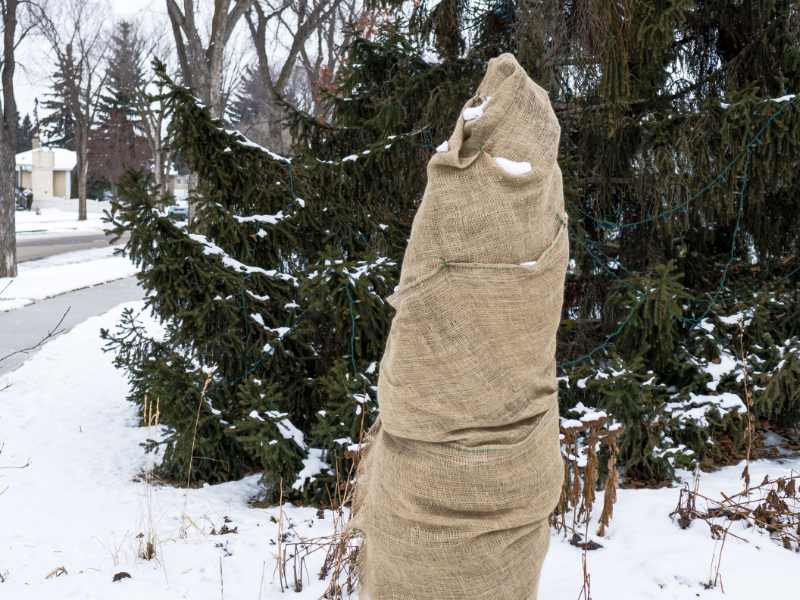
There are dissenting opinions on the use of tree wrap and whether it’s beneficial for trees or causes more problems. The main argument against tree wrap: If you plant trees correctly and provide proper tree care, you won’t need it.
Here are a few tips on how to plant trees correctly:
- Plant trees so their root flare — where the topmost root comes out of the trunk — is at the soil surface or slightly above it.
- Water thoroughly as needed.
- Never mulch over the root flare. (No mulch volcanoes!)
- When pruning, make cuts that are flush to the branch bark collar, leaving it intact so it can seal off the wound, protecting the trunk from disease and decay.
Pro Tip: For the best outcome when pruning, deciduous trees should be pruned in late fall and early winter.
If your purpose behind tree wrap is to prevent insect damage or the removal of bark by animals, you are better suited to use:
- Vinyl spiral tree guards
- Specially made tree banding (to prevent insect damage)
- Build a small cage around the trunk using wire mesh.
FAQ About Tree Wrap
How Do You Protect Your Trees in Winter?
There are three ways to protect your tree during winter:
• Wrap the tree trunks: Tree wrapping is a tried and true way to protect against sunscalding, bark damage, and disease.
• Mulch around the base: Applying 2 to 4 inches of mulch around (not on) the base of the tree provides insulation, reduces soil evaporation, and improves water absorption. You can use recycled leaves here to add to your mulch.
• Water thoroughly: Water the tree, and the surrounding area, one last time. Go slowly at a rough rate of 10 gallons per inch of tree diameter.
The most important thing to do to protect your trees from the harshness of winter is to be prepared. Winter can be a damaging time of year for many trees and knowing ahead of time how best to protect your trees can save you from losing them. When going through these steps, focus on younger trees that are at high risk of winter damage.
How is Sunscald Treated?
You can help treat sunscald on trees by keeping your tree healthy and properly irrigated and fertilizing only if your soil calls for it.
Also, carefully removing any dead or loose bark from the wound can improve the damaged section. By cutting these off, you limit hiding space for potential insects and improve the look of the wound. Never try to seal the wound with a tree sealer or paint.
Instead, it is better to let the tree heal itself. In many cases, a tree will heal and callus from sunscald damage on its own within a few years. Properly caring for the tree with adequate water and fertilizer will help the recovery process.
What Can I Use Instead of Tree Wrap?
Tree guards work as a good alternative to tree wraps. Tree guards are like tree wraps but they are typically cylindrical tubes placed on the bottom of the tree’s trunk to protect against:
• Insect damage
• Lawn mowers
• Sunscalding
• Winter damage
When purchasing tree guards, go for white, as this will reflect the rays of the sun and keep the tree trunk cool.
Another alternative to tree wraps that can protect against insect damage is tree banding. Tree banding is done by wrapping a band of a sticky substance around a deciduous tree to capture insects that walk along the trunk. This won’t do much against sunscalding, but it will protect the tree against harmful insects such as cankerworms.
Tree Professionals
Tree wrapping can help to protect your trees from sunscald and damage during the winter months. If you are unsure if you should wrap your trees, consulting with an arborist can help. Many tree care companies have them on staff. Don’t let the first frost catch you off guard; call a local tree care professional to help protect your trees.
Main Photo Credit: Radovan1 / Shutterstock / License
